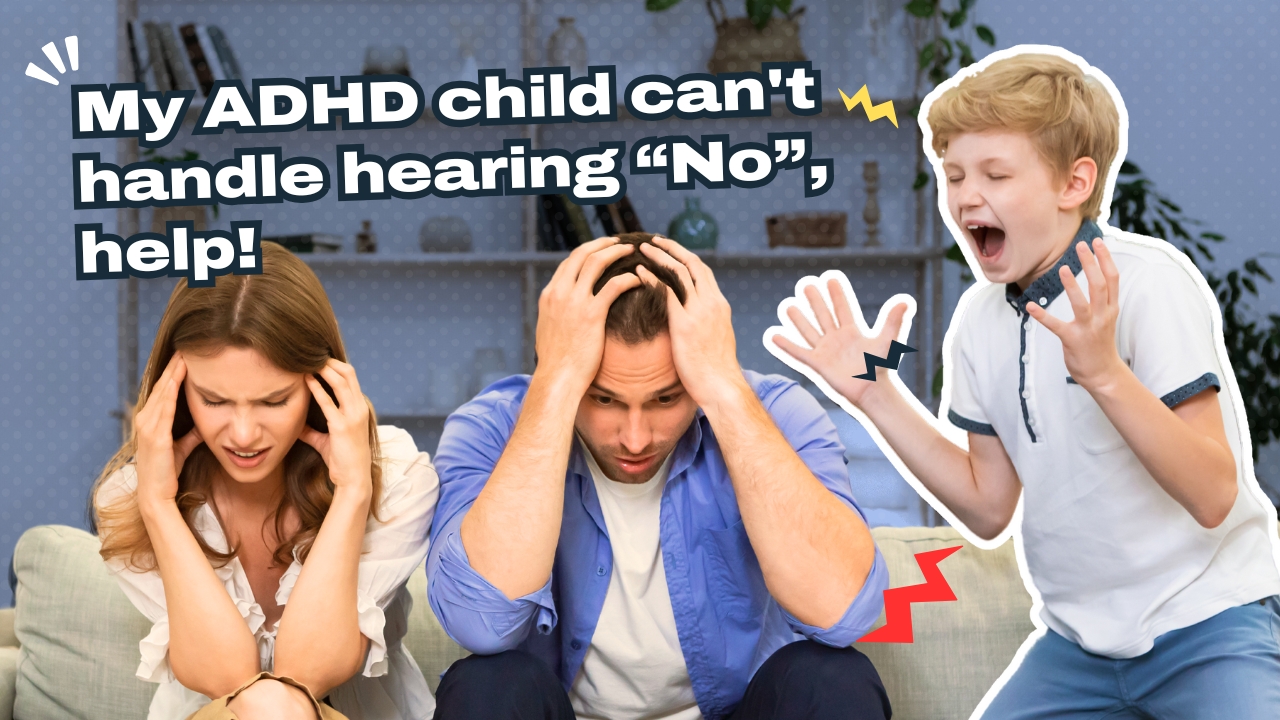How To Handle A Child Who Can't Handle Not Getting Their Way
Inflexibility, the inability to adapt to change or consider alternative perspectives, is a common challenge faced by many children with ADHD. This can manifest in various ways, often leading to frustration, conflict, and strained relationships. Understanding the underlying causes of inflexibility and implementing effective strategies can significantly improve a child's ability to cope with change and navigate social situations.
The Root of Inflexibility: A Deeper Look
Children with ADHD often struggle with executive functioning skills, including planning, organization, and problem-solving. These cognitive challenges can make it difficult for them to adapt to change, especially when their routines or expectations are disrupted. Additionally, sensory sensitivities can exacerbate inflexibility, as children with ADHD may become overwhelmed by changes in their environment or routine.
Furthermore, emotional regulation difficulties can contribute to inflexibility. When children with ADHD experience strong emotions, such as frustration or anger, they may struggle to control their impulses and engage in flexible thinking. This can lead to tantrums, meltdowns, or oppositional behavior, making it difficult for them to compromise or consider alternative perspectives.
The Impact of Inflexibility on Children with ADHD
Inflexibility can have significant negative consequences for children with ADHD, affecting their social, emotional, and academic development. Some of the potential impacts include:
- Strained Relationships: Inflexibility can lead to conflict with parents, siblings, and peers, as children may struggle to compromise or consider others' perspectives.
- Academic Difficulties: Inflexibility can hinder a child's ability to adapt to different learning styles and teaching methods, leading to challenges in school.
- Social Isolation: Difficulty with social skills and inflexible behavior can lead to social isolation and difficulties forming and maintaining friendships.
- Increased Stress and Anxiety: Constant frustration and difficulty adapting to change can contribute to increased stress and anxiety, which can further exacerbate ADHD symptoms.
Strategies for Promoting Flexibility
To help your child develop greater flexibility, try incorporating several strategies. Start by creating a predictable routine, as a consistent structure can provide a sense of security and make it easier for them to adapt to change. Using visual schedules can also support this, as it helps your child know what to expect and prepares them for transitions. Practicing mindfulness and relaxation techniques can further aid in emotional regulation, improving their ability to handle stress and adapt to changes.
Encouraging problem-solving is another key strategy; invite your child to brainstorm solutions and consider different perspectives. Modeling flexibility in your own behavior shows them how to adapt to new situations. Additionally, set realistic expectations to avoid unnecessary frustration, and celebrate small wins to acknowledge their efforts in being adaptable. If your child’s inflexibility significantly impacts their daily life, consider seeking professional support from a therapist or mental health professional.
Strategies for Promoting Flexibility
To help your child develop greater flexibility, consider implementing the following strategies:
- Create a Predictable Routine: A consistent routine can provide a sense of security and reduce anxiety, making it easier for your child to adapt to change.
- Use Visual Schedules: Visual schedules can help your child understand what to expect and prepare for transitions.
- Practice Mindfulness and Relaxation Techniques: Mindfulness and relaxation techniques can help your child regulate their emotions and improve their ability to cope with stress and change.
- Encourage Problem-Solving: Encourage your child to brainstorm solutions to problems and consider different perspectives.
- Model Flexibility: Demonstrate flexibility in your own behavior and show your child how to adapt to changing circumstances.
- Set Realistic Expectations: Avoid setting unrealistic expectations that may lead to frustration and disappointment.
- Celebrate Small Wins: Acknowledge and reward your child's efforts to be flexible and adaptable.
- Seek Professional Support: If your child's inflexibility is severe and impacting their daily life, consider consulting with a therapist or other mental health professional.
Handling Inflexibility in Real-Time
When your child is struggling with inflexibility, there are practical ways to respond effectively in real-time. First, stay calm and composed, even if your child is upset or frustrated; your calmness can help soothe the situation. Avoid power struggles, as engaging in them may escalate the issue. Instead, set clear limits and consequences for any inappropriate behavior, ensuring your child knows the boundaries.
If needed, use time-outs to give your child a chance to calm down and regain control. Offering choices can also be helpful, as it provides a sense of autonomy, allowing them to feel more in control. Finally, practice patience and understanding.
Developing flexibility is a gradual process, so give your child the time and support they need as they learn to adapt to change.
Join the ADHD Dude Membership Site to gain access to valuable resources and courses designed to support parents of children with ADHD.
Join Our Mailing List To Get Our Newsletter and Latest Updates
We will never SPAM.



